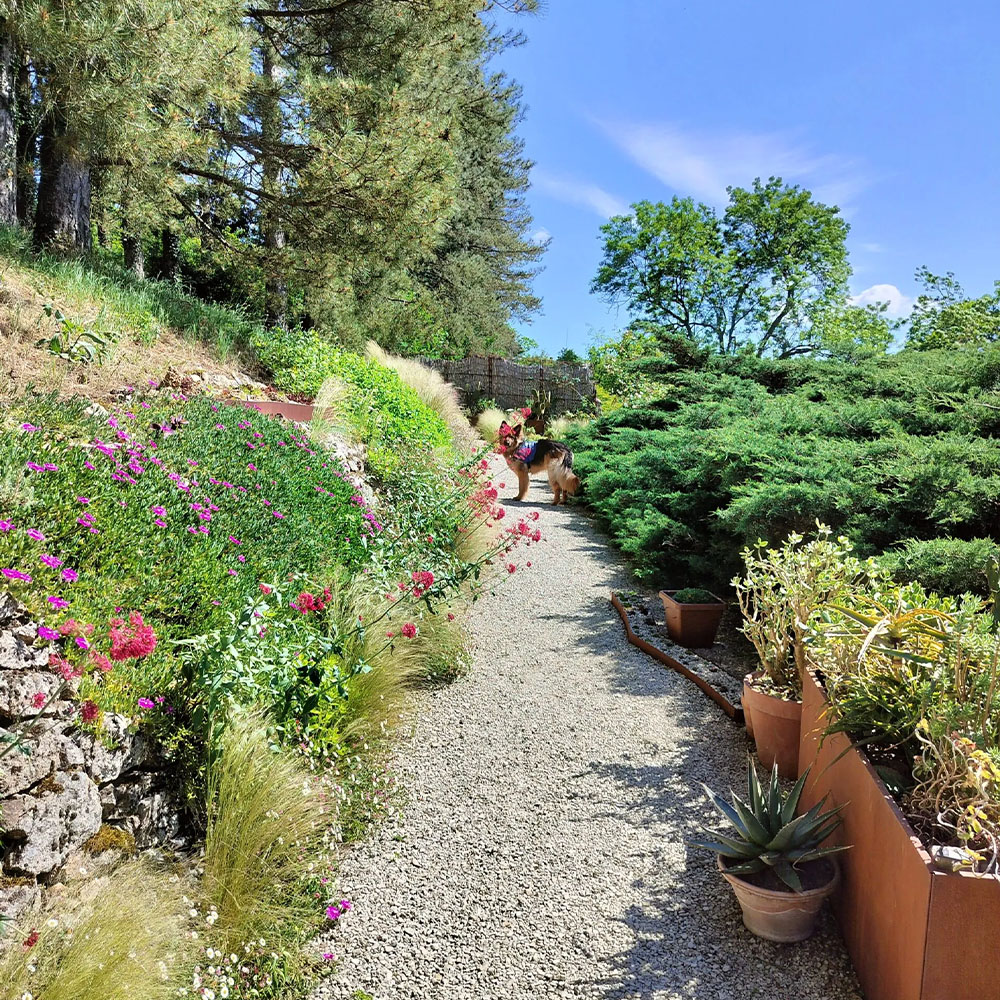No products in the cart.

The key to a dry garden is ‘right plant, right place’ as Beth Chatto put it.
This approach emphasizes choosing plants that are well-suited to the specific conditions of your garden, such as soil type, sunlight, and water availability.
The next stages are technical – drainage and helping the young plants establish themselves in such a way as to optimize their growth rate and improve their ability to access water even in times of drought. We’ll cover the how/what tools/what soil/where/exposure/how big should the hole be in another post because today, I want to focus on the WHY.
Ok so….
Why should you create a dry garden?
- Diminish your overal water usage – especially if you have a large garden
- Reduce the amount of time you spend watering plants daily
- Lower the amount of death due to heat stroke and therefore heartbreak in your life
- Make something wonderfully beautiful and fragrant with just a few plant varieties.
Here are a few of our favorite looks and ideas for a dry garden below – feel free to visit their websites for more information. If you need a hand picking out plants, we are always keen to collaborate so don’t hesitate to reach out!
Mashamba Design
https://www.mashambadesign.com/portfolio/



The classic, wild Mediterranean gardens revisited with structure, dynamism and so much beauty.
The colors, the textures, the graphics – it’s just magnificent!
And many of the plants that this talented duo uses are available right here in our nursery.
#1: Romance
- Echium (coming soon)
- Festuca glauca
#2: Blue Stillness
#3: Sway
Garden of Thyme
Using the naturally drought-tolerance and creeping habit of thyme to cover swathes of land and retain moisture.
Thyme comes in many colors and textures – and flowers in a few shades of lavender/blue so your can really create a thyme patchwork.

- Thymus camphoratus – clump-forming, camphor fragrance
- Thymus coccineus ‘Creeping Red’ – creeping habit, turns dark red in the winter
- Thymus ‘Duftkissen’ – intensely fragrant, creeping habit, soft fuzzy leaves
- Thymus pulegoides – fragrant, creeping habit, bright purple flowers
- Thymus longicaulis ‘Odoratus’ – intensely fragrant, very vigorous creeping habit, light purple flowers
Olivier and Clara Filippi


The Filippi nursery, located in Hérault, France, was founded in 1984 by Clara and Olivier, a couple who is passionate about the study of plants that thrive in difficult conditions.
In light of the challenges posed by climate change, their focus has expanded beyond drought resistance to include the extreme conditions plants must endure: water scarcity, heatwaves, cold in mountain altitudes, salt from coastal winds, calcareous soils, and heavy rains causing floods. A Mediterranean garden can experience extreme cold in winter, a dry garden can become flooded during certain periods, and it’s essential to manage a plant space subject to such influences.
In addition to cultivating mother plants and the experimental garden, the three-hectare nursery employs a team of about ten people and produces all the plants offered for sale—over 1,000 species and varieties: shrubs, small trees, perennials, and ground cover plants. This botanical wealth ensures great diversity in these “dry” gardens, as the Mediterranean basin is home to 25,000 species, compared to just 6,000 in temperate regions. On site sales only.
The books written by Filippi are a reference for drought-tolerant nurseries and landscapers worldwide – I cannot recommend them highly enough.
#1:
#2: Beneath the Pines
I’ll keep adding ideas as we go – this is a huge universe and there is so much to learn, always.
